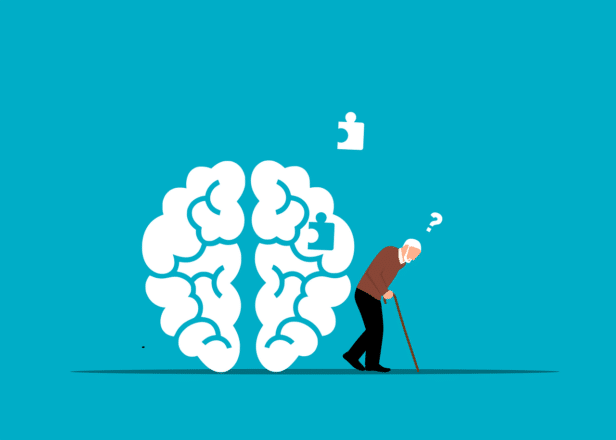In the compelling discourse of “The Relationship Between Alzheimer’s Disease and Dementia,” the intriguing relationship between dementia – a term which encompasses a myriad of symptoms that tamper with memory, cognition and social abilities, ultimately disrupting day-to-day life – and Alzheimer’s disease, the most prevalent cause of dementia in elderly adults, is intricately unfurled. This insightful narrative peels back the layers of dementia, touching upon its multifarious symptoms, including but not limited to memory loss, troubles with visual and spatial abilities, reasoning and problem-solving difficulties, as well as psychological shifts. Strikingly, this article underscores that the presence of memory loss alone doesn’t qualify as dementia, while shedding light upon the many sources of dementia, including irreversible forms like Alzheimer’s and reversible ones that are responsive to treatment. Encouragingly, proactive measures such as a healthy lifestyle and diet are broached as potential safeguards against cognitive decline and dementia in later life.
Understanding Dementia
Definition of Dementia
Dementia is a term that describes a group of symptoms affecting memory, thinking, and social abilities sufficiently severe to interfere with daily functioning. However, it’s crucial to understand that dementia is not a specific disease. It’s an overall term, much like heart disease, that covers a wide range of medical conditions, including Alzheimer’s disease.
Symptoms of Dementia
Symptoms of dementia can vary greatly from person to person, depending on the impact area in the brain. Some of the most common symptoms include cognitive changes like memory loss, difficulty communicating or finding words, problems with visual and spatial abilities, trouble reasoning or problem-solving, and struggling with complex tasks or organizing. The individual may also show psychological changes such as depression, anxiety, indifference, personality changes, agitation, and even hallucinations.
Causes of Dementia
Dementia is caused by damage to or loss of nerve cells and their connections in the brain, which commonly happens as a part of the aging process. Depending on the area of the brain that’s affected, this can result in varying kinds of dementia. Several diseases can cause dementia, including Alzheimer’s disease and stroke.
Understanding Alzheimer’s Disease
Definition of Alzheimer’s Disease
Alzheimer’s disease is a progressive disorder that causes brain cells to degenerate and die. It’s the most common cause of dementia, a continuous decline in thinking, behavioral and social skills disrupting a person’s ability to function independently.
Common Manifestations of Alzheimer’s Disease
The early signs of Alzheimer’s Disease often include losing track of dates, problems with words in speaking or writing, and decreased judgment or problem-solving skills. As the disease progresses, severe memory loss crops up, particularly for recently learned information, and disorientation gets prominent. Alzheimer’s can also lead a person to become confused about events, time, and places.
The Cause of Alzheimer’s Disease
Although the exact cause of Alzheimer’s disease is still unknown, its development has been linked to plaques and tangles formations in the brain cells. These plaques and tangles have been noted to block communication among nerve cells and spur cell death, leading to Alzheimer’s disease.

Alzheimer’s Disease as a form of Dementia
How Alzheimer’s Disease fits under the umbrella term of Dementia
Alzheimer’s is the most common type of dementia, contributing up to 60-80% of all dementia cases. Similar to all forms of dementia, Alzheimer’s is caused by brain cell death. It’s a progressive disease, where symptoms appear gradually over time and become increasingly severe.
Similarities and Differences between Alzheimer’s and other types of Dementia
Alzheimer’s shares many symptoms with other types of dementia, like memory impairment, difficulty with communication, problem-solving, and coordination. It also shows distinct differences, mostly rooted in its specific pathology, revealing characteristic plaques and tangles in the brain.
Other Types of Dementia
Vascular Dementia
Vascular dementia is the second most common dementia type after Alzheimer’s. It often occurs as an aftermath of stroke where the regions of the brain become deprived of proper blood flow, hence resulting in functional impairment.
Lewy Body Dementia
Lewy body dementia, named for the abnormal protein clumps that develop in the brain, causes classic dementia symptoms along with movement disorders, visual hallucinations, and certain sleep disturbances.
Frontotemporal Dementia
Frontotemporal dementia is characterized by damage to the front and side parts of the brain, which leads to problems with behavior, language, and motor skills.
Mixed Dementia
Mixed dementia is a condition in which more than one type of dementia is present, such as Alzheimer’s disease and vascular dementia.

Relationship between Alzheimer’s Disease and Dementia
Comparison of Symptoms
While the foundation of symptoms such as memory loss and impaired judgment remain the same between Alzheimer’s and other forms of dementia, differences exist. For example, visual hallucinations are relatively common in Lewy Body Dementia, but not in Alzheimer’s.
Comparison of Causes
Alzheimer’s is believed to be caused by a buildup of certain proteins in the brain. Meanwhile, vascular dementia is caused by reduced blood flow, and Lewy Body Dementia is due to protein deposits in nerve cells.
Understanding Progressive Relationship
All forms of dementia, including Alzheimer’s, are progressive. This means that the brain damage gradually spreads, leading to increasingly severe symptoms over time.
Risk Factors for Alzheimer’s Disease and Dementia
Influence of Age
Age is the single most significant risk factor for dementia, especially after age 65. The risk doubles every five years after 65.
Genetic Factors
Certain genes are known to increase the likelihood of developing Alzheimer’s and other forms of dementia. However, having these genes doesn’t guarantee the development of dementia.
Lifestyle-related Risks
Factors like smoking, a lack of physical activity, a poor diet, and excessive alcohol intake can all raise dementia risk.

Prevention of Alzheimer’s Disease and Dementia
Importance of a Healthy Lifestyle
Adopting a healthy lifestyle can lower the risk of developing dementia. For example, avoiding harmful habits such as smoking can aid in prevention.
Role of Regular Exercise and Balanced Diet
Regular physical exercise and a balanced diet rich in fruits, vegetables, lean protein, and low-fat dairy products can help fend off dementia.
Other Preventive Measures
Maintaining a healthy blood pressure, regularly challenging yourself mentally and staying socially engaged can also contribute to dementia prevention.
Treatment Options for Alzheimer’s Disease and Dementia
Existing Treatment for Alzheimer’s Disease
Although Alzheimer’s disease has no cure, treatments can slow the progression and improve the quality of life. Drugs like donepezil, rivastigmine, galantamine and memantine are common.
Existing Treatment for Dementia
Medical treatments for dementia depend on its cause, but in many cases, progress can be slowed, symptoms reduced and pain alleviated.
Methods to Manage Symptoms
Non-drug strategies like creating a supportive and safe environment, establishing a routine of exercise, healthy diet, and proper sleep can effectively manage symptoms.
Cognitive Changes in Alzheimer’s Disease and Dementia
Memory Loss
Memory loss is a common symptom of dementia and particularly emphasized in Alzheimer’s disease. It impairs a person’s ability to recall events and personal history and often affects learned behaviors.
Impaired Reasoning or Problem-solving
Dementia can cause problem-solving and reasoning abilities to decline. This can result in difficulties with complex tasks like managing finances or driving a car.
Visual and Spatial Abilities
Alzheimer’s and other types of dementia can disrupt visual and spatial abilities, making it challenging to navigate familiar spaces, recognize faces, or perform tasks needing good hand-eye coordination.
Psychological Changes in Alzheimer’s Disease and Dementia
Manifestations of Depression
Depression is fairly common in Individuals with dementia and Alzheimer’s. Though it tends to appear later in the disease’s progression, it’s important for caregivers to spot since it can worsen dementia symptoms.
Presence of Anxiety and Agitation
Anxiety and agitation are also common and may be a reaction to feeling loss of control, struggle with tasks, or confusion about what’s happening around them.
Incidents of Hallucinations
Certain types of dementia, like Lewy Body Dementia, can result in hallucinations. These can be visual, auditory, or sensory experiences often leading them to see, hear or feel things that are not there. Such psychological changes can lead to emotional distress. Hence, it’s crucial for caregivers to provide comfort and reassurance as needed.
